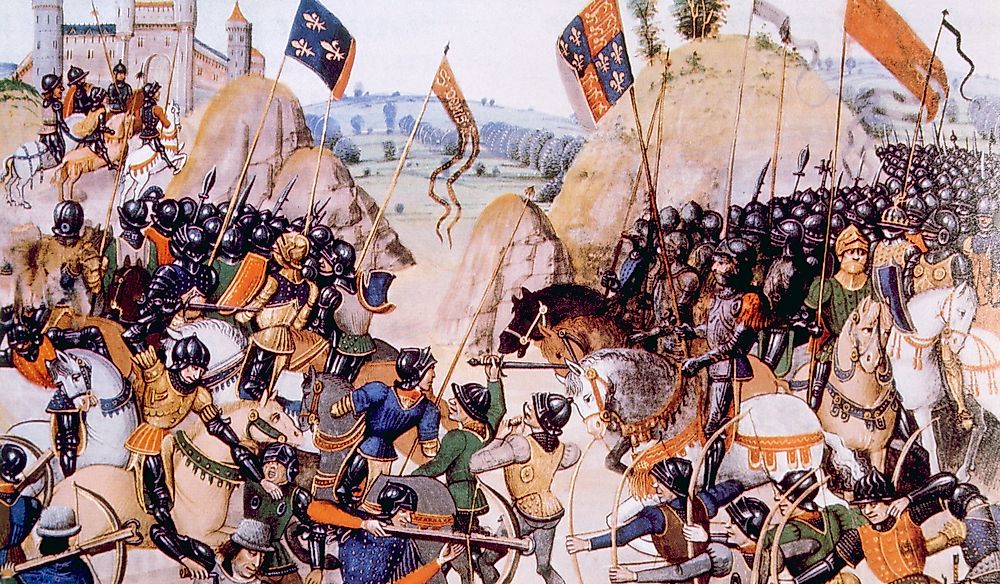How Long Was The Hundred Years' War?

The Hundred Years' War refers to the conflicts that were fought between 1337 and 1453 between the House of Plantagenet and the House of Valois from England and France respectively. The English house, which was the ruling house of the Kingdom of England, was challenging the French house over the control of the Kingdom of France. As the period shows, the war took 116 years, which means the name of the war is a bit misleading. The lengthy war was fought in several locations including France, Great Britain, the Low Countries, and the Iberian Peninsula.
Lead Up to the War
The roots of the war go all the way back to the beginnings of the English royal family, which had French origins. For this reason, the English rulers held land in both England and France, which meant that they were the vassals of France. This meant that the king could compel English monarchs who had land in France for help with things like troops during war as was required by law. History records show that, at one point, the English monarchs had more territory in France than the French monarchs did. This became a source of conflict between the two kingdoms since the French wanted to check the powers of the English. Consequently, the French took every opportunity to reduce the English monarch’s territory, which is why, by 1337, the English only owned Gascony. For example, when the English went to war with Scotland, which was allied to France, the French used that opportunity to reduce the dominance of the English.
All of these events did not cause an all-out war. In 1316, the French came up with a principle that denied women from ascending to the throne. Things became complicated in 1328 after the death of Charles IV of France who had no sons or brothers to succeed him. Edward III of England was the closest male relative to the deceased king, which is why Edward’s mother, Isabella, claimed the French throne for her child. The French denied him the throne and gave it to the Count of Valois, Philip VI of France instead. The English did not force the issue until Phillip confiscated Edward’s lands in France, which is what started the war.
Major Battles and Aftermath
When the war started, the English won a number of decisive victories at several places such as Crécy, Agincourt, and Poitiers. These victories gave the impression that the English were well on their way to victory. However, the French had vast resources that always hampered the penetration of the English into the French territory. In addition, the French won a number of decisive battles at places like Patay, Orleans, Castillon, and Formigny, which ended the war with a French victory. When the conflict ended, the French won and managed to retain their kingdom thus making sure that England and France remained separate. In addition, the English lost their continental territories but managed to acquire the Pale of Calais. The Hundred Years' War had lasted for exactly 116 years, four months, three weeks, and four days making it one of the longest wars in recorded history.











